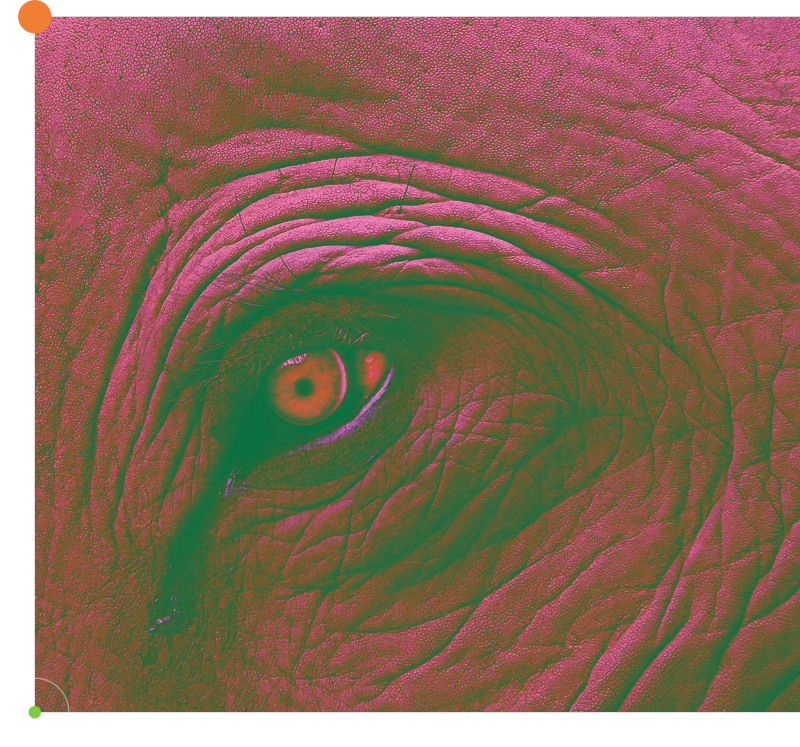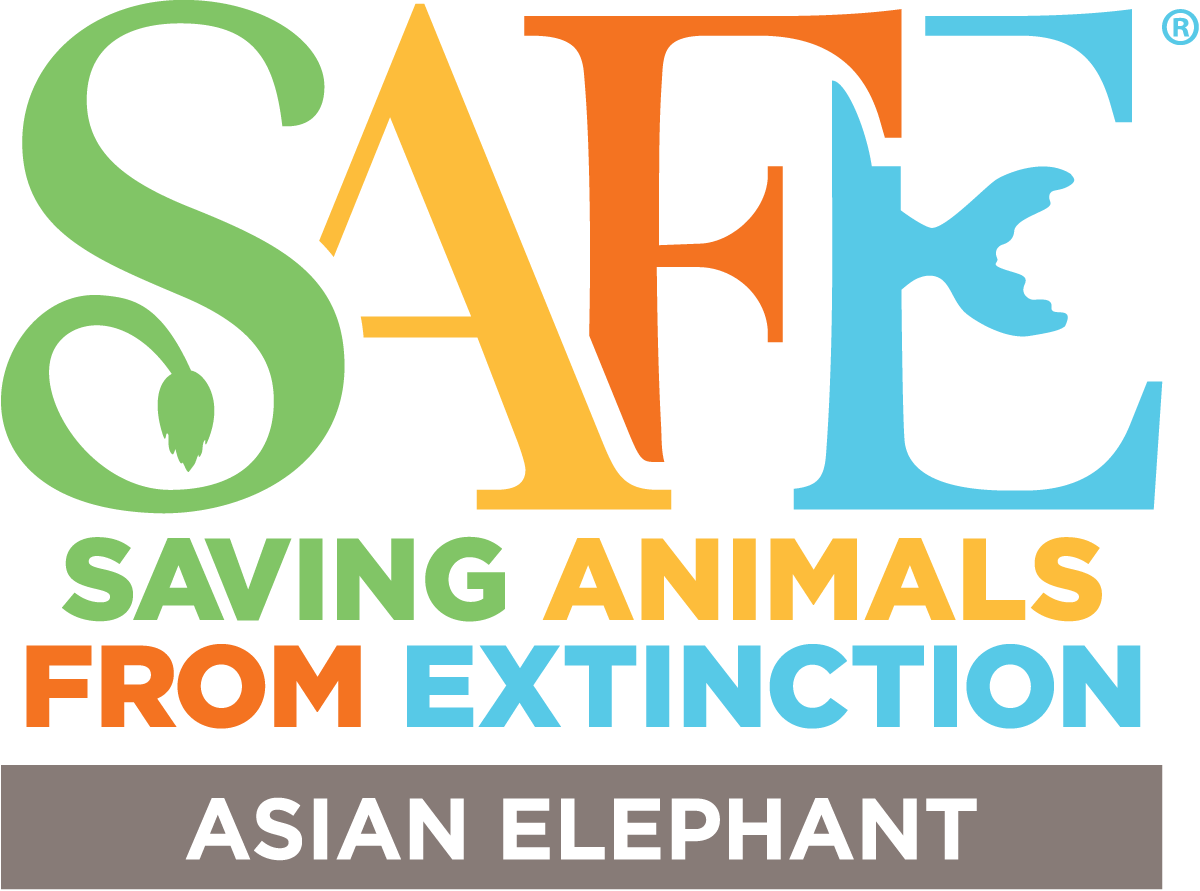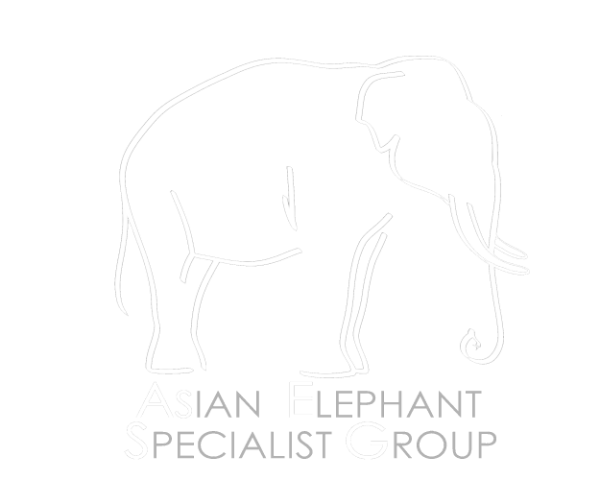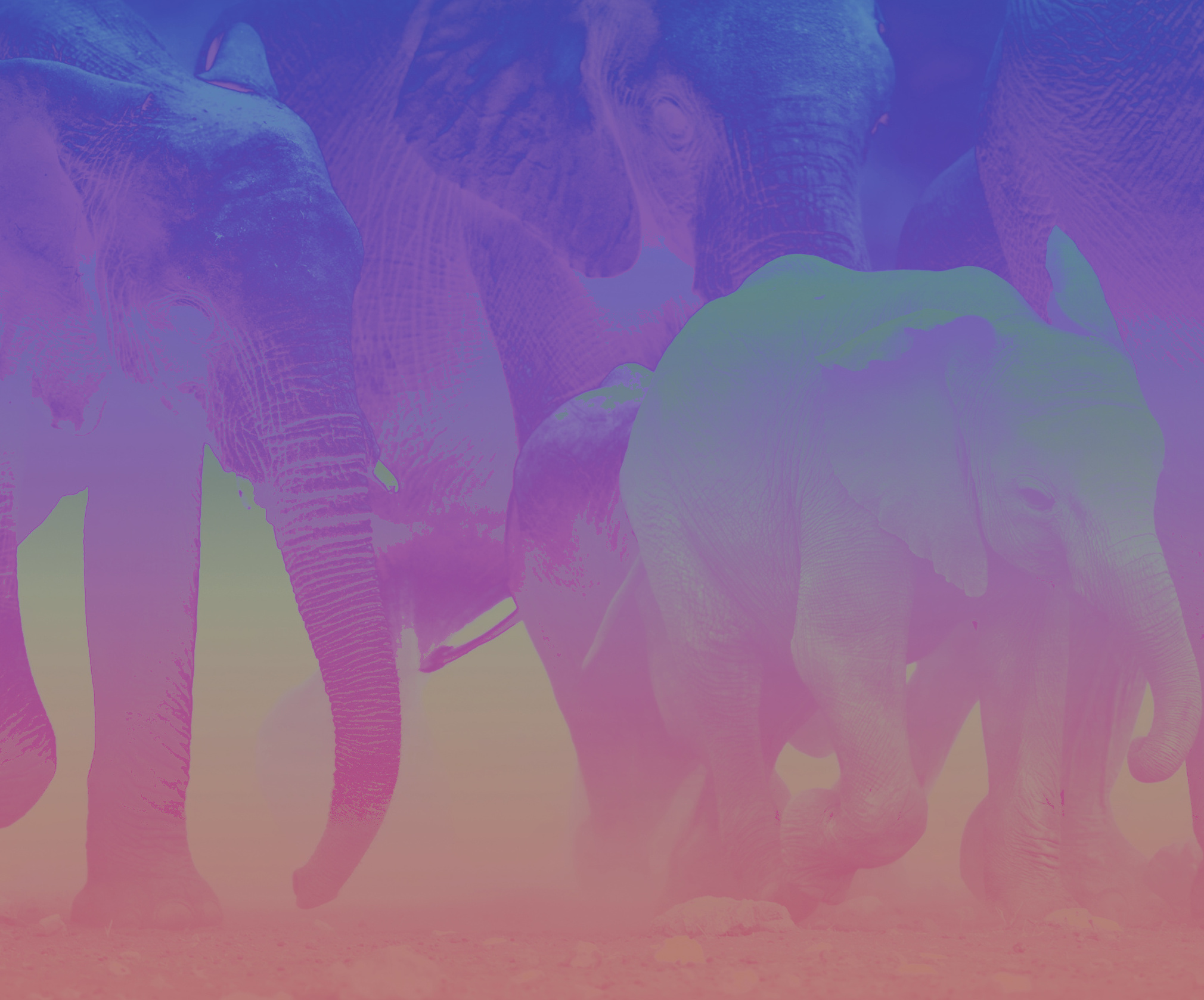

ELEPHANT CONSERVATION
ALL ELEPHANT SPECIES ARE IN DIRE
NEED Of a SCIENCE THAT WILL SAVE THEM.
The largest land animal on earth needs our largest conservation efforts. Now. The Asian elephant and African Savanna elephant are classified by the IUCN as ‘Endangered,’ while the African Forest elephant is listed as ‘Critically Endangered.’ All species are in dire need of a science that will save them.
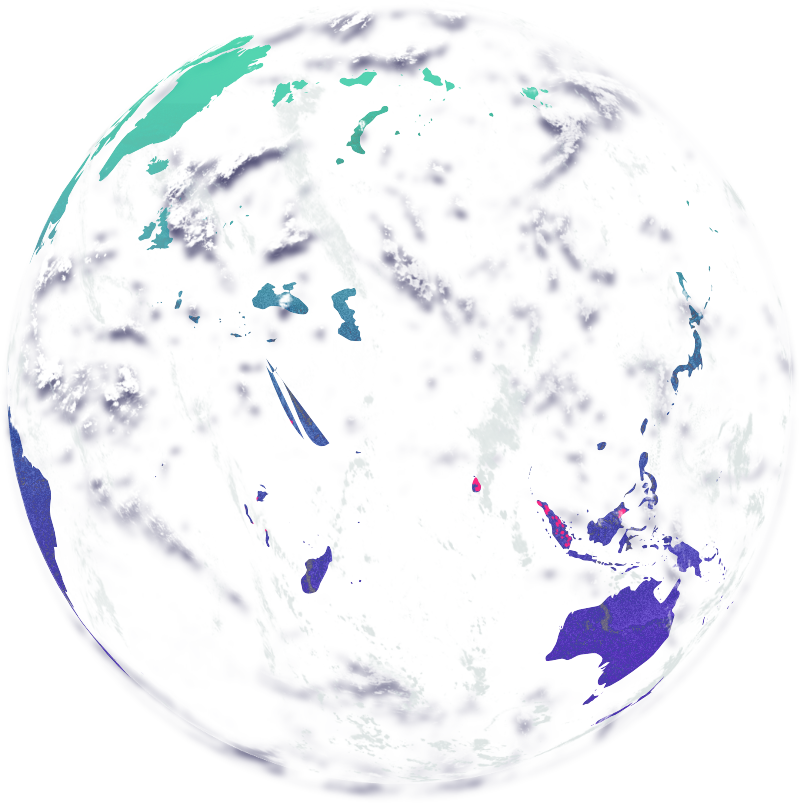

ELEPHANTS,
WE’VE GOT BIG
PROBLEMS.
Modern elephants are on the brink of extinction. For countless reasons, that’s a massive problem. But the solution is even bigger. It’s Colossal.

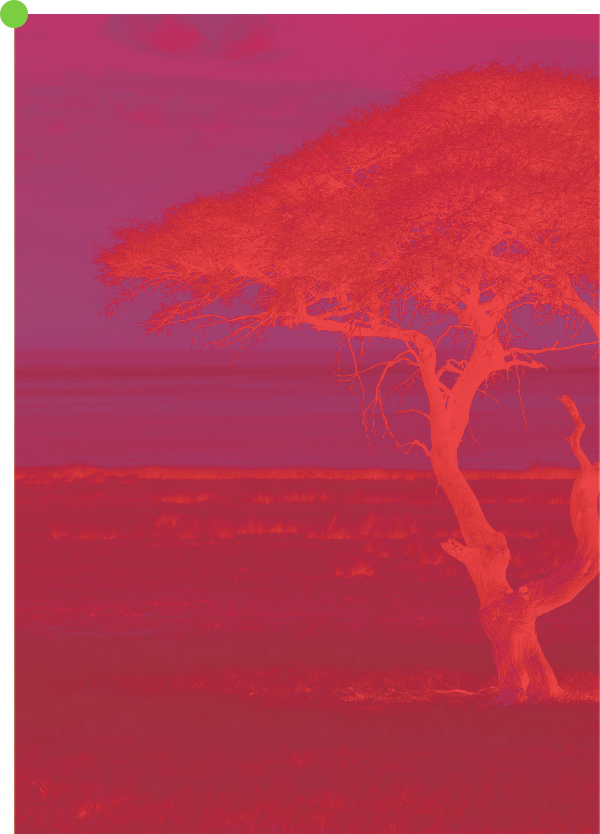
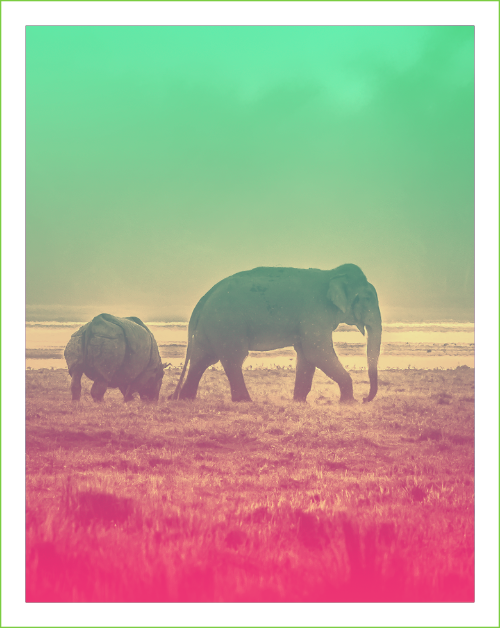

WHAT ARE
MEGAFAUNA?
+ Megafauna is defined as large or giant animals of an area, habitat, or geological period, either extinct or still in existence. Animals weighing over 46 kilograms (101.41 pounds) up to more than 1,000 kilograms (2,204.62 pounds) are considered megafauna.
Mega Biodiversity
+Megafaunal species can be further categorized according to their dietary type: megaherbivores (e.g., elephants), megacarnivores (e.g., lions), and also, although more rare, megaomnivores (e.g., bears).
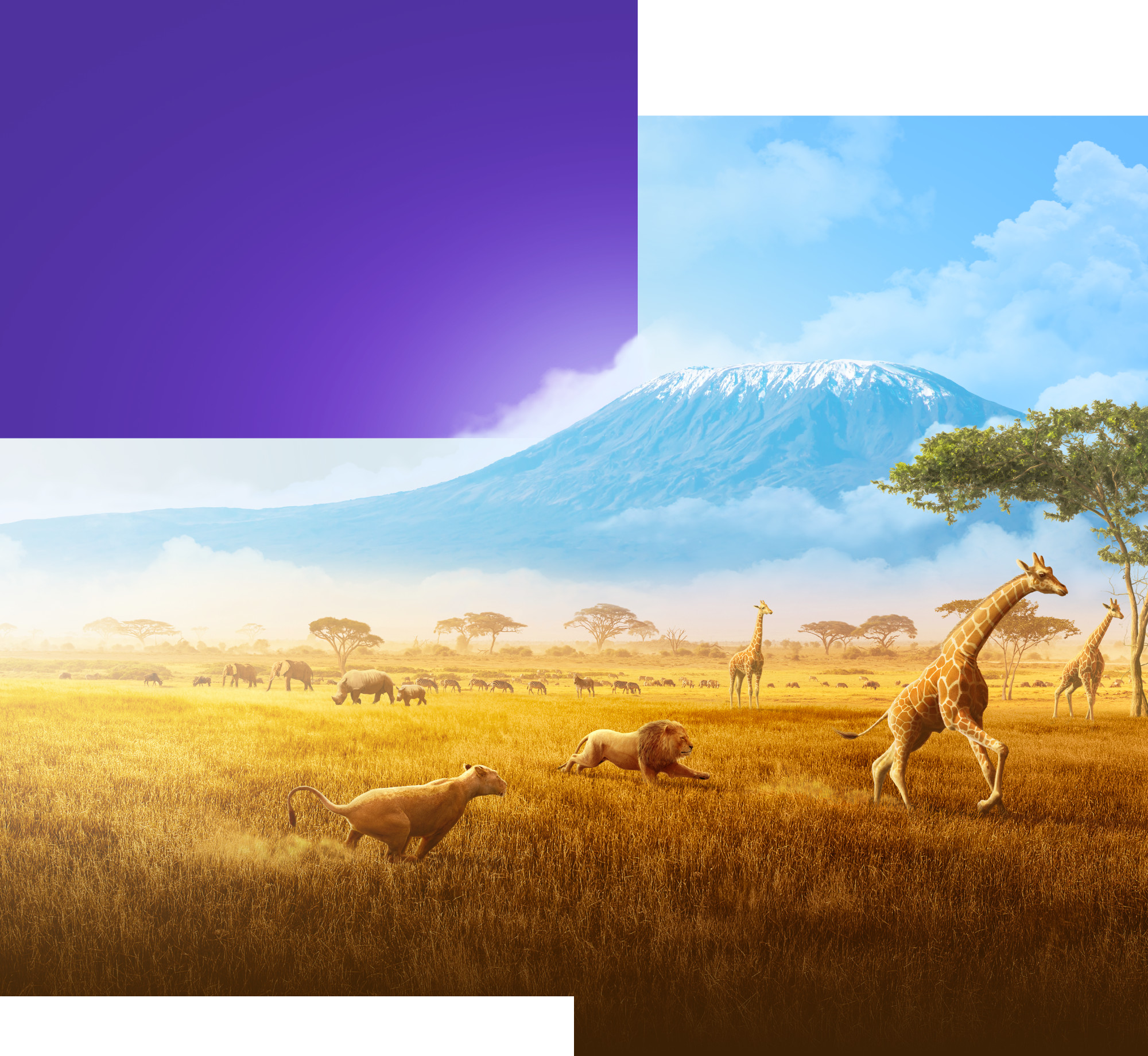
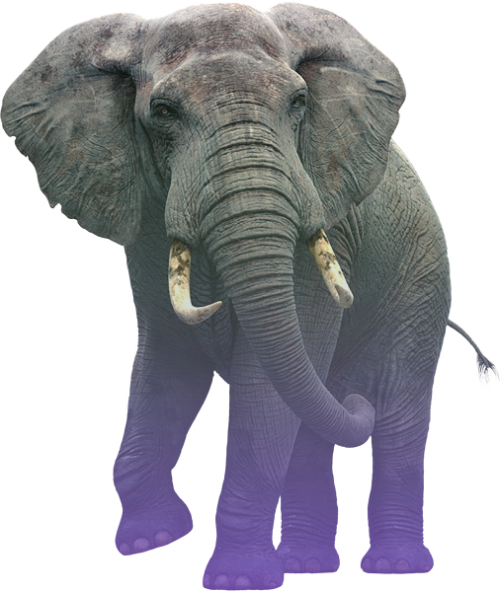
Elephants are considered a keystone species. The designation of keystone species signifies that elephants are prime contributors to maintaining the vitality and biodiversity of the ecosystems in which they inhabit.

KEYSTONE SPECIES:
LOXODONTA /
ELEPHAS

Elephants are looked at as “ecosystem engineers” because they shape habitats in a multitude of ways. During the dry season, elephants dig up dry river beds creating watering holes that benefit a wide spectrum of the animal kingdom. In forest climates, elephants create gaps through the growth and vegetation - constructing “highways” that smaller animals and insects depend on for survival. In the savanna, elephants uproot trees and eat saplings which maintains the landscape for other plains animals to thrive in. Across all environments, elephant dung filled with seeds serve to spread plant life that thrives across the savannah boosting the overall health of the ecosystem.
To ensure that this critical species continues to contribute to the environment, Colossal will also focus on bringing a cure to the virus that is decimating their populations.

“Colossal’s work exemplifies a powerful, needed leap in the advancement of genetic engineering technologies.
In leading the revolution to bring back extinct species, Colossal will restore and preserve these unique lifeforms from our planet (and someday maybe other planets). I am incredibly excited to be collaborating with their scientists, ethicists, engineers, geneticists, and visionary teams.”

Professor of Genomics, Physiology, & Biophysics Weill Cornell Medicine
[ Colossal SCIENTIFIC Advisory Board Member ]
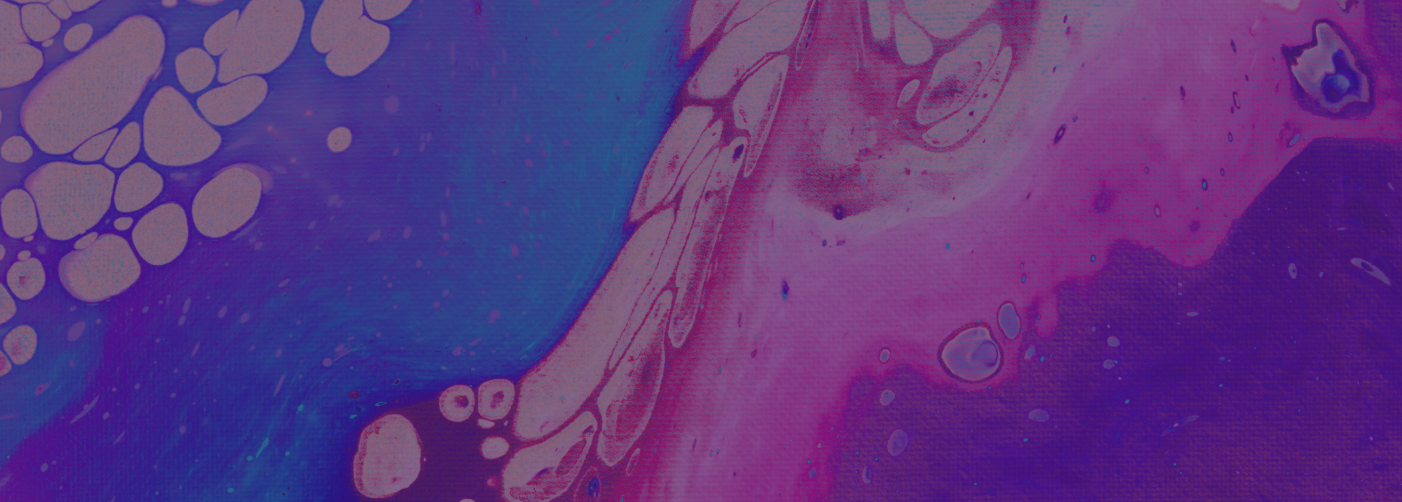
 ELEPHANT POPULATIONS
ELEPHANT POPULATIONS
ARE IN ALARMING
Decline.
ARE IN ALARMING
Decline.
The largest land animal on earth needs our largest conservation efforts. Now. The Asian elephant and African Savanna elephant are classified by the IUCN as ‘Endangered,’ while the African Forest elephant is listed as ‘Critically Endangered.’ All species are in dire need of a science that will save them.
* Ptopulation and endangered status statistics from IUCN. Factors include ivory poaching, habitat loss & encroachment. (Source: Center for Biological Diversity March 25, 2021)
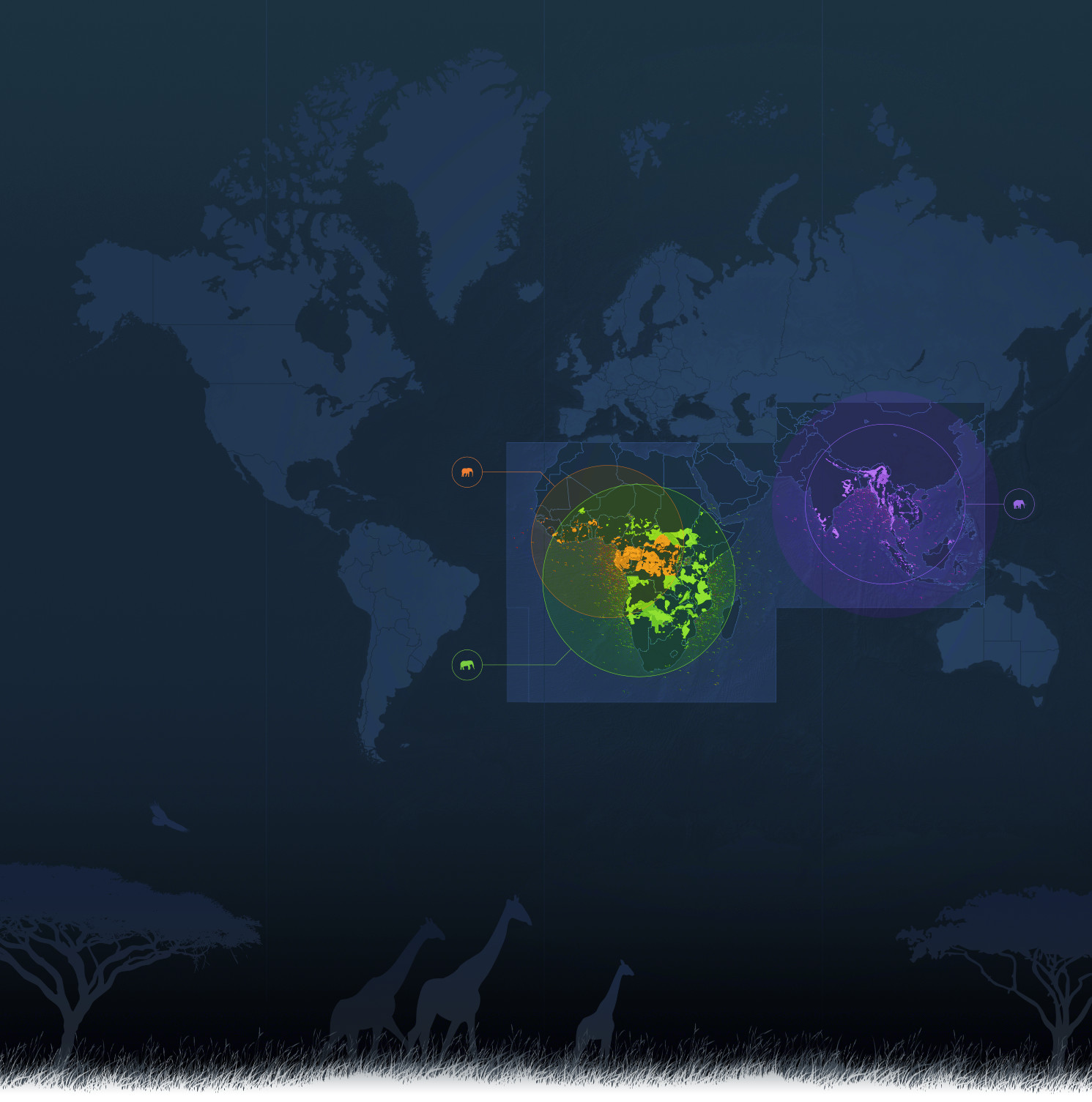
Extant Elephant Species
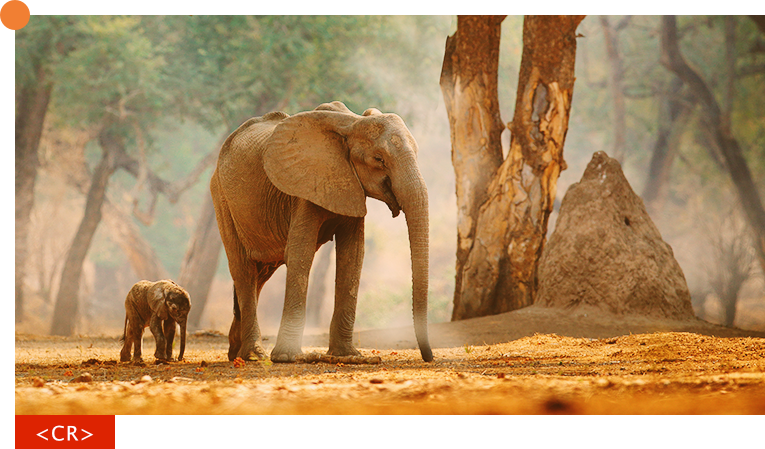
African Forest Elephant
Loxodonta cyclotis
- In the last 31 years the population fell by more than 86%
- In less than a decade, populations declined by 62% between 2002-2011
- Estimated 415,000 elephants across Africa (Includes both African + Savanna species)
- Forest elephant population is estimated to be roughly 60,000 individuals
- Currently facing an 8% annual decline
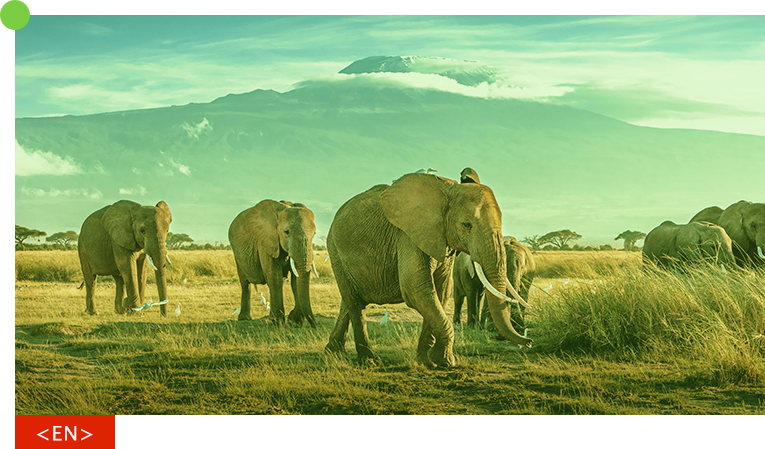
African SAVANNA Elephant
Loxodonta africana
- Population fell by at least 60% over the last 50 years
- In less than a decade, populations declined by 30% between 2007-2014
- Estimated 415,000 elephants across Africa (Includes both African + Savanna species)
- Savannah population is estimated to be 352,000 (Pan-African survey, Chase et al, 2016)
- Currently facing an 8% annual decline
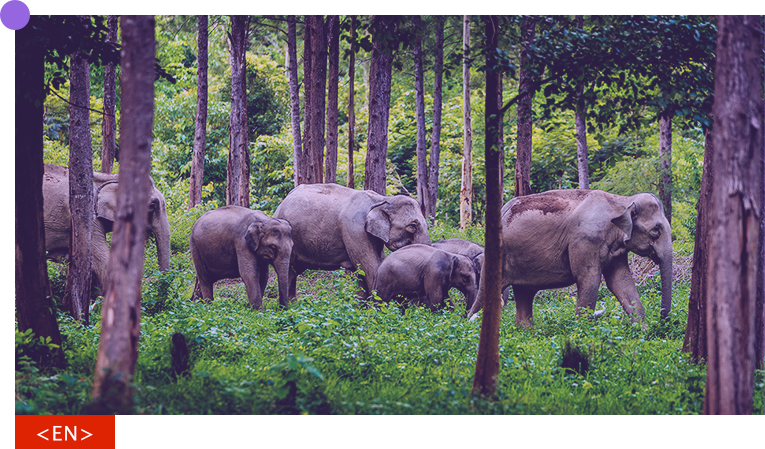
Asian
Elephant
Elephas maximus
- Population fell by an estimated 50% over the past 75 years
- Estimated 20,000 – 40,000 elephants left in the wild
- Only occur in 10% of their historical range (WCS)

Two Main causes of
elephant deaths
HUMAN FACTORS
- Wildlife crime has led to sharp declines in all three species since 2008 due to a significant increase in poaching, which peaked in 2011.
- Poaching claimed more than 100,000 African elephants between 2010-2012 alone.
- Farming and agriculture leads to dozens of elephant poisonings each year in palm oil plantations throughout southeast Asia.
- Human-elephant conflict caused by human encroachment into elephant habitats leads to hundreds of elephants being killed each year.
NATURAL FACTORS (EEHV)
- EEHV (otherwise known as elephant endotheliotropic herpesviruses– EEHV1A being the most common).
- EEHV has been responsible for about half of all deaths of young elephants in human care.
- Elephants under the age of 10 are the most vulnerable to EEHV.
- Recently, there has been an unsettling outbreak of EEHV in African elephants and elephants that were considered outside of the vulnerable age ranges.
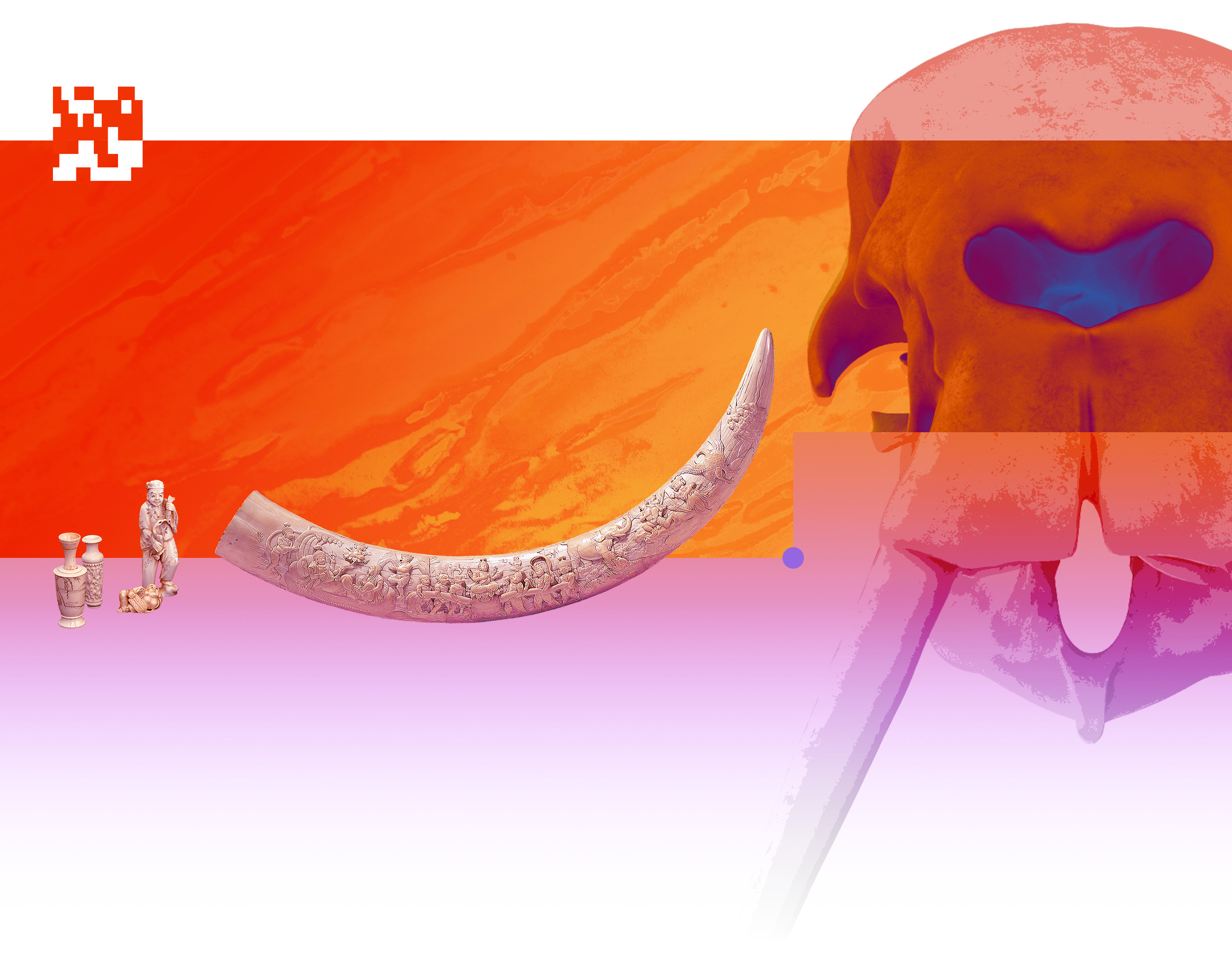
THE human
role in
elephant
extinction
Elephants and Humans ARE in conflict
Even though the elephant is protected by legislation across Asia, they are increasingly being killed in anger or self defense. Studies by Raman Sukumar in three locations in India suggested that up to 20% of elephant deaths were caused directly by crop defense. These studies took place in 1982 and the situation is thought to have worsened since. In Sri Lanka, it is reported that up to 150 wild elephants are shot or poisoned by farmers every year.
1,160 elephants were killed in India between 2010 and 2020 due to human activity, including 741 elephants killed due to electrocution, 186 killed by train collisions, 169 to poaching, and 64 to poisoning. (source: India’s Union Ministry of Environment, Forest and Climate Change) 1,160 asian elephants would represent a 3% total loss across all range states, more than 4% of India’s total population.
We must never let their footprints be erased
There is no doubt that humans pose the greatest threat to the ongoing survival of elephants everywhere. For African elephants, the leading factors that have decimated the herd populations are wildlife crime, primarily poaching, and the illegal trade of ivory ranking as the number one reason for population decline. The World Wildlife Fund (WWF), reports that annually a minimum of 20,000 elephants are killed for their tusks.
Between 1979 and 1989, half of all Africa’s elephants were lost to the ivory trade, according to a pan African census conducted by STE’s Iain Douglas-Hamilton. Research estimates that the number of elephants killed for their ivory between 2010 and 2012 was 100,000. Even if all poaching completely ceased today, elephant populations would still require decades to recover because of their slow reproductive rates.
The elephant in the room needs space to live
The loss of natural elephant habitats is increasingly threatened from human-elephant conflict. As human settlements, agricultural developments and infrastructure move deeper into elephant habitats it forces populations to abandon their ancient migratory routes and into new territory. This creates interference from crop-raiding, property damage, and occasional human injuries and casualties. African elephant populations
have fallen from an estimated 12 million a hundred years ago to a mere 400,000*. African forest elephant populations declined by 62% between 2002-2011 and they’ve lost 30% of their geographical range, with African savanna elephants declining by 30% between 2007-2014. This dramatic decline has continued and even accelerated with cumulative losses of up to a staggering 90% decline from 2011-2015 in some places.
Colossal Head of Animal Operations
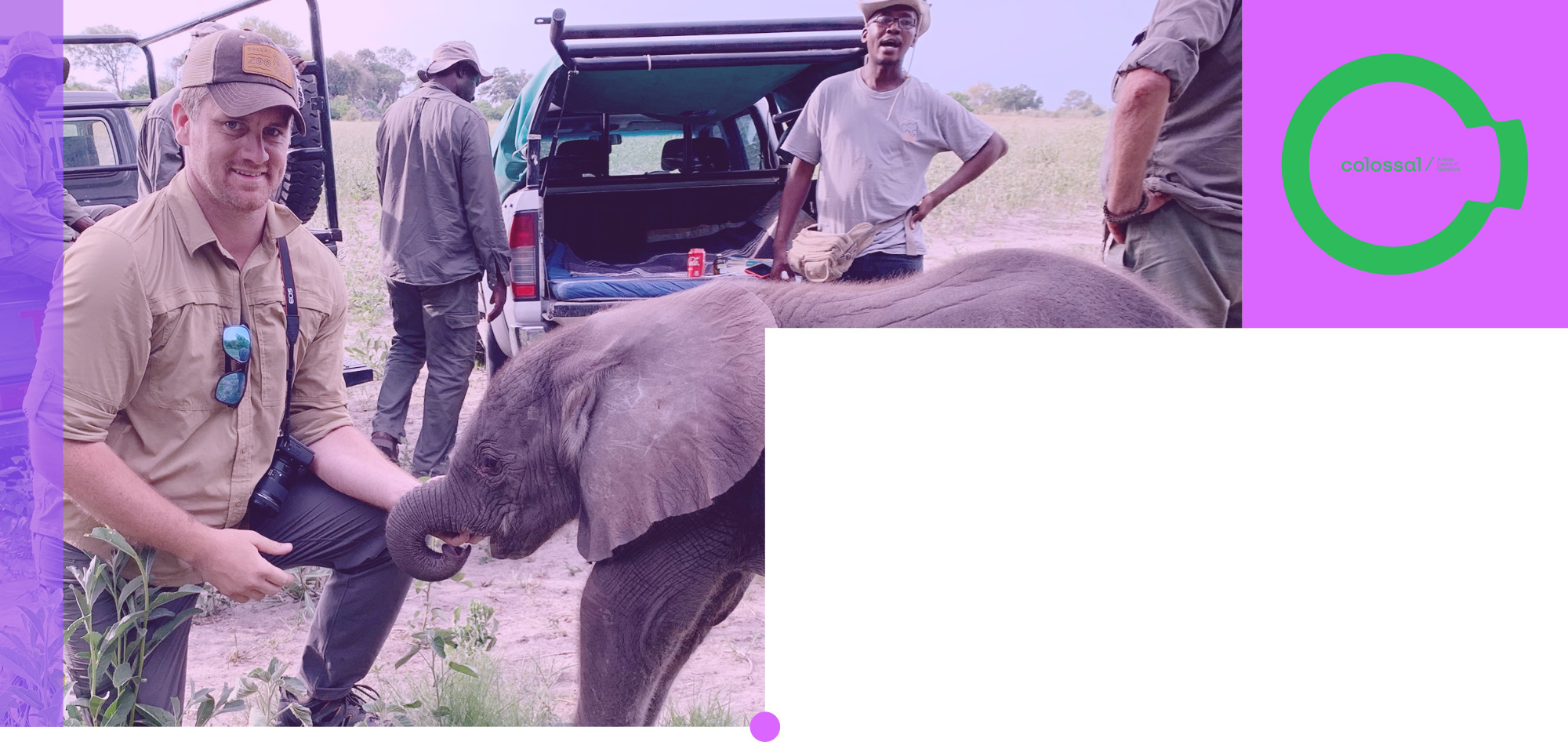
MATT JAMES
Colossal Head of Animal Operations
Matt James is building animal care strategies around our de-extinction programs and endangered species protections as well as leading Colossal’s field conservation efforts.

After completing his Bachelor’s degree in Biology and Chemistry with a focus in Molecular Biology at Doane University in Crete, NE, Matt initially pursued a career in marine science, securing a job as a marine mammal trainer in South Florida. Working with marine mammals helped him develop a strong foundation in husbandry and operant conditioning, skills that led to an opportunity caring for and training a herd of African elephants at Tampa’s Lowry Park Zoo. At Lowry Park, Matt was part of a small team that restructured the operant conditioning and breeding program for their resident elephants, building relationships with the animals as individuals. These training efforts led to a successful husbandry program in which the elephants voluntarily participated in their care, including procedures such as artificial insemination, semen collection, and radiographs. Focusing on natural herd dynamics, the team was able to optimize welfare through a variety of strategies, including creating choice and control for the elephants in their day to day management.
 The improvement in their welfare soon resulted in the herd successfully breeding and rearing calves, creating a multi-generational herd.
The improvement in their welfare soon resulted in the herd successfully breeding and rearing calves, creating a multi-generational herd.
After nearly five years working with elephants, rhinos, and African antelope in Tampa, Matt took on a new challenge at Zoo Miami, initially as the Zoological Supervisor for Mammals and shortly thereafter as the General Curator, managing the full collection of over 4,000 animals. In Miami, Matt had the unique privilege of working with two elephant herds, one herd of Asian elephants and one herd of African elephants. This opportunity to study the similarities and differences in a side-by-side comparison created a deeper understanding of elephant behavior, cognition, and conservation, ultimately strengthening his passion for the species. Knowing that he wanted to do more to help influence positive momentum within the animal care community, Matt became active with several Species Survival Plan (SSPs) through the Association of Zoos and Aquariums. These plans and programs are pivotal in preserving long-term genetic diversity within animal populations, and Matt’s involvement in the Elephant SSP allowed him to take part in or lead several elephant translocations between zoo facilities, even translocating an adolescent Asian elephant bull to Zoo Miami from the Melbourne Zoo in Australia.
During his tenure in Miami, Matt began supporting and working with field conservationists to protect endangered species such as elephants, rhinos, tigers, wild cattle, and antelope. In addition to securing financial support, Matt was driven to take on leadership roles in conservation initiatives such as Program Leader for Red River Hog, Yellow-backed Duiker, and Giraffe Species Survival Plans, serving on the Global Species Management Plan as a Husbandry Advisor for Javan Banteng, and sitting on Taxon Advisory Groups (TAGs) such as Rhino TAG, Elephant TAG, and Vice-Chairing the Antelope, Cattle, Giraffid, and Camelid TAG.
Energized from his five years at Zoo Miami, but knowing that growth often comes from change, Matt pursued an opportunity to become the Senior Director of Animal Care at the Dallas Zoo; a progressive, mission-oriented organization with a strong focus on conservation. At Dallas, he once again had the opportunity to manage a breeding herd of African elephants as well as get more involved in global elephant conservation. Specifically, he was introduced to the founders of Elephant Havens, a startup elephant orphanage outside of Maun, Botswana. Having formed an instant connection with their vision and altruism, Matt has passionately lent his support and expertise in animal care, husbandry, and training to Elephant Havens, including assisting on elephant rescues in the field and advising on formula development for nutrition protocol.
Matt’s frequent involvement in conservation and breeding programs helped create a passion for innovative approaches to conserving endangered species, so when an opportunity arose to join Colossal’s disruptive conservation efforts he could not pass on the chance.
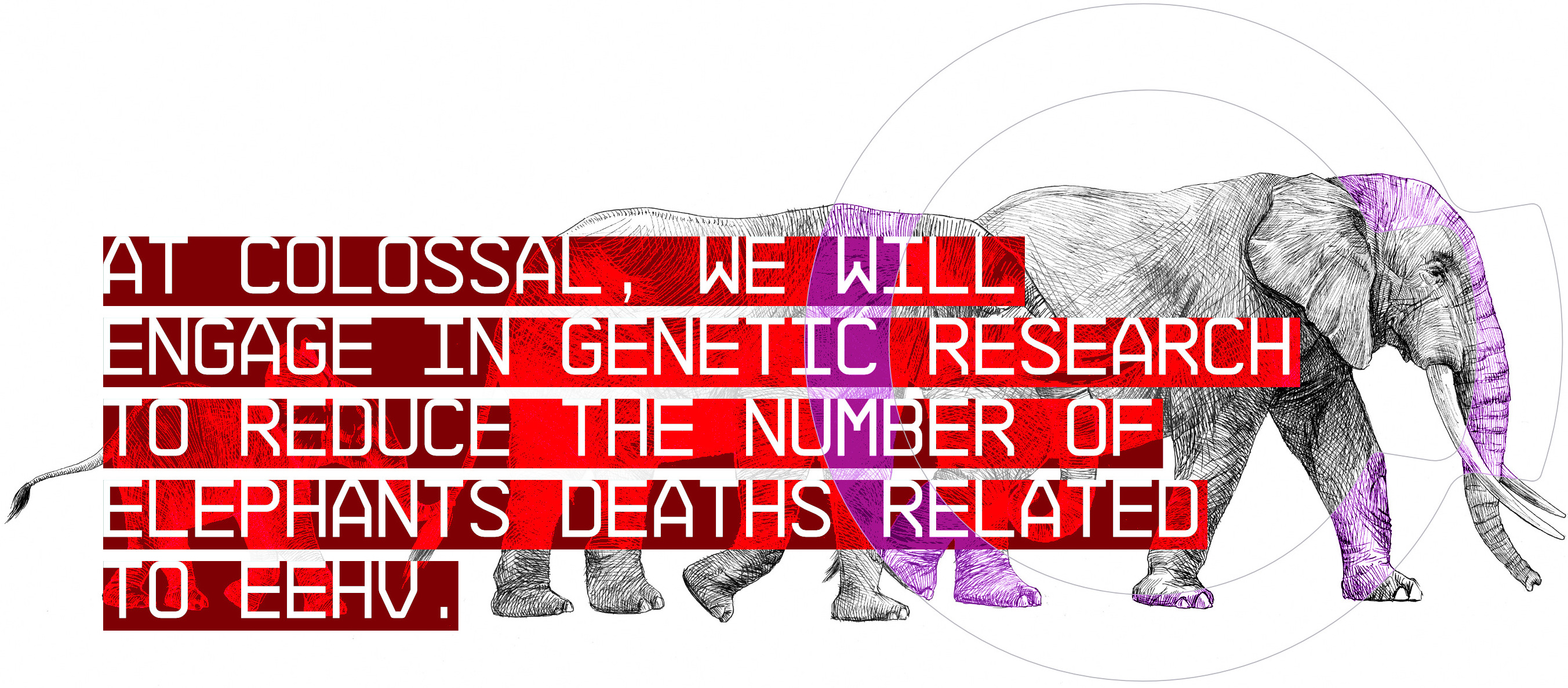
EEHV: Elephant Endotheliotropic Herpesvirus

A FACTOR THAT
COLOSSAL CAN CONTROL.
14 genetically unique strains of EEHV have been identified to date.
EEHV is responsible for about half of the deaths of young elephants in zoos– the most common of which is EEHV1A. EEHV1A is an acute fatal disease that claims the lives of many young Asian elephants. North American statistics from 2019 conclude that 32% of Asian elephants were affected by EEHV with a staggering 66% fatality rate among the infected.
Outside of human-conflict, EEHV, otherwise known as elephant endotheliotropic herpesviruses poses a great threat to elephants– both in human care and in the wild. While herpesviruses are common and do not pose a health risk to humans, it can be deadly within African and Asian elephant populations.

EEHV has impacted 35% of all Asian elephants in North American zoos.

It accounts for 66% of all Asian elephant deaths in North American zoos with a 65% fatality rate.

EEHV is 39% fatal in African elephants and has accounted for 7% of all deaths in North American zoos.
Good
TO KNow

What does Colossal’s woolly mammoth work have to do with EEHV?
Colossal is acutely aware that helping the living populations of elephants is critical for the woolly mammoth existence, since a strong portion of the woolly mammoth’s hybrid genomes will come from Asian elephants. The same elephant populations that are currently being decimated by EEHV.
What is Colossal doing to combat EEHV?
Colossal is applying CRISPR gene editing technology to hone in on the genetic mutations that create susceptibility to the herpesvirus in elephants and eliminating those genetic susceptibilities.
Can humans get EEHV?
The EEHV virus only affects elephant populations equally in the wild and captivity.
Is there a cure for EEHV?
No, but Colossal is going to change that using CRISPR and the genome sequencing research we’re conducting as we bring back the woolly mammoth.
How will EEHV research help beyond elephants?
The applications of the research will reach far beyond the elephant species and ultimately will have beneficial breakthroughs that will impact human health and wellness.
How can I help?
If you’d like to be part of the work that Colossal and our wonderful partners in helping the elephants, click the link below to see how you can get involved.


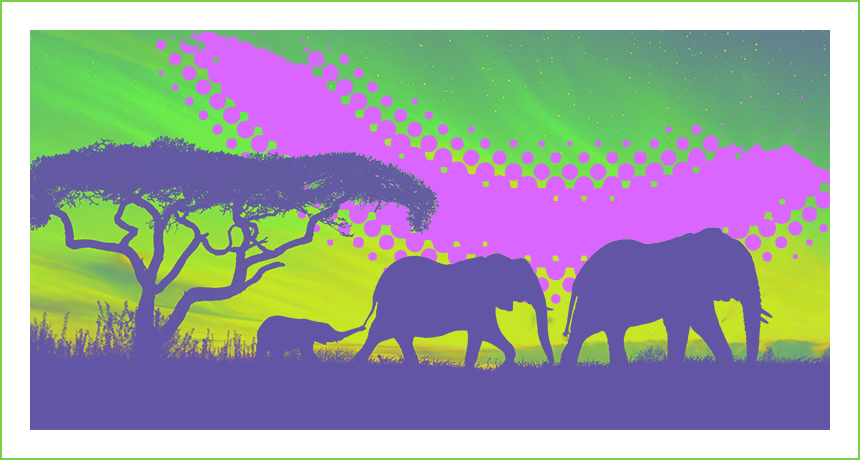

Colossal’s Solution:
To Revolutionize the
Protection & Preservation
of All Elephant SPECIES.
Now that you’ve seen the major challenges that elephant species are facing globally, it becomes clear that something drastic must be done if we are to salvage this precious animal from being erased off the face of the Earth.

4 MILESTONES
 TO END ELEPHANT EXTINCTION.
TO END ELEPHANT EXTINCTION.
Preserve the genetic code of all three living elephant species.
Record and understand extant elephantid population genomes.
Cure EEHV in all elephant populations.
Equip modern elephants with traits from their ancestral domain.
Through these disruptive conservation methods our efforts will thoughtfully and strategically blaze a trail for the future of all elephants to thrive.

The bigger
they are, THE BIGGER
the reasons
TO SAVE THEM
Colossal and the Vertebrate Genomes Project (VGP) are embarking on the world’s first effort to obtain the genetic code of the existing elephant lineage. As part of this collaboration, Colossal is funding the VGP efforts to sequence, assemble, and annotate the Asian, African, and Forest elephant genomes to genetically preserve the species for future generations. Our aim is to produce population sequence data on 100 African and Asian elephants to record and understand extant elephantid population genomes. The genomes will be made publicly available to be used for research without use restrictions.
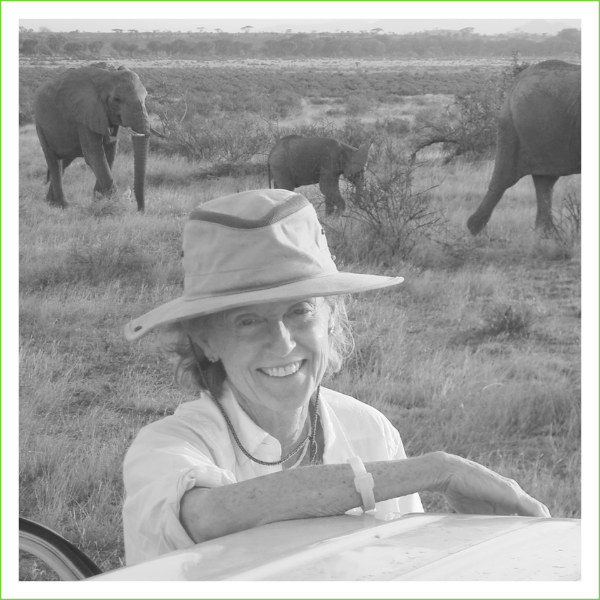
VIRGINIA RIDDLE PEARSON
[ COLOSSAL SCIENTIFIC ADVISORY BOARD MEMBER ]
“When I look into the eye of an elephant, I see another self, not unlike my own. I have spent over half a century trying to save elephants from extinction.
Within this time, entire populations of wild elephants throughout range countries in Africa and Asia have been decimated or eliminated by organized killing for the ivory trade, human encroachment and agricultural appropriation of historical elephant forests and grasslands. Only 450,00 African and Asian elephants exist today: the African savannah elephants, Loxodonta Africana; the African forest elephants, Loxodonta cyclotis; and the much less numerous Asian elephants, Elephas maximus, including remnant subspecies in Borneo, E.m borneensis and in Sumatra, E.m sumatranus romanus.
All are red-listed as Endangered or Critically Endangered by the International Union for the Conservation of Nature. Together these represent the last surviving genera of the Family Elephantidae within the Order Proboscidea, that includes extinct woolly mammoths, Mammuthus primigenius, and dwarf elephants, Paleoloxodon falconeri and Mammuthus creticus.
Elephant reproductive sustainability is severely threatened by the elephant endotheliotropic herpesviruses (EEHVs), endogenous viruses that have coexisted with African and Asian elephants for millions of years, but that can cause acute and lethal hemorrhagic disease (EEHVs-HD). Despite their grave consequences, little is known about the molecular biology of the EEHVs, and, equally prevalent but seemingly less pathogenic, elephant gammaherpesviruses (EGHVs). Since the index case of EEHVs-HD was identified in 1995 more than 100 cases of EEHVs-HD fatalities have been documented in predominantly young wild and captive Asian elephants in Asian range countries and North American and European zoos. EEHVs-HD, with a mortality rate of 80% affects, affects more than one quarter of all new-born Asian elephant calves in North American zoos. Recently, eighteen cases of acute EEHVs-HD disease or death have been documented in young and sub-adult African elephants in North American and European zoos. My research has shown that EEHVs and EGHVs are periodically shed in saliva of wild and captive African and Asian elephants, indicating ubiquitous latent infection by these ancient viruses. Efforts are currently underway to document EEHVs-HD fatalities in wild elephants throughout Africa.
I am so thankful that two of Colossal Biosciences’ main goals are to propagate the EEHVs in vitro to aid development of vaccines and therapeutics against EEHVs-HD and to sequence (in cooperation with the International Vertebrate Genome Project) entire genomes of dwindling African and Asian elephant populations to potentially identify any genetic susceptibility to EEHVs-HD and to aid in management decisions to foster genetically sustainable wild and captive
Help Us.
Help Them.
At Colossal, we choose to be proactive, rather than reactive. That's why we know that the time to act is now, before it’s too late. Thanks to our world- renowned scientific advisory board, we’re confident that we are entering the conservation world at a pivotal moment. Our disruptive conservation discoveries will drastically change and define how humanity combats climate change and counteracts the loss of biodiversity for years to come.
Spread the truth and share with the world. +

Big problems
require big action. +
Take action and consider making a donation that will positively impact the wild
populations of elephants around the world. Your donation will go directly to the
efforts of one of our incredible elephant conservation partners: +

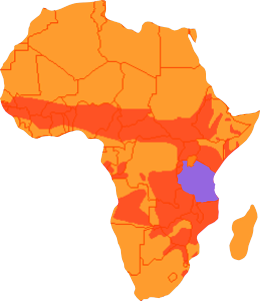
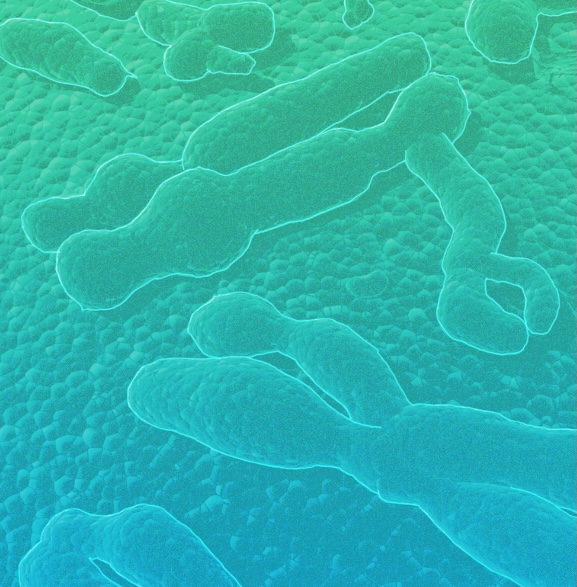

 Through these disruptive conservation methods our efforts will thoughtfully and strategically blaze a trail for the future of all elephants to thrive.
Through these disruptive conservation methods our efforts will thoughtfully and strategically blaze a trail for the future of all elephants to thrive.